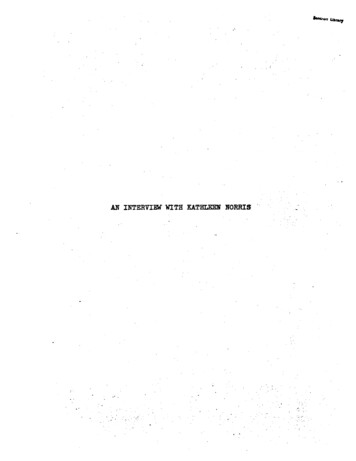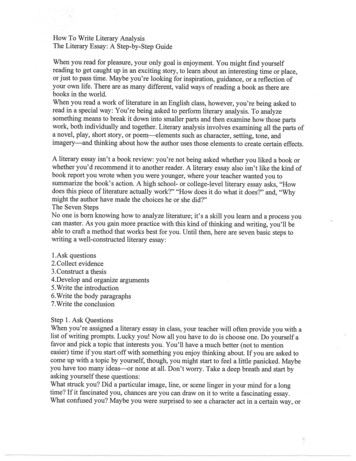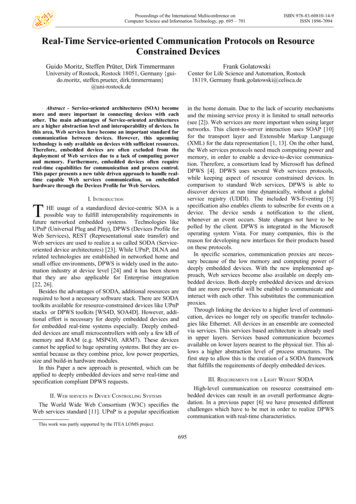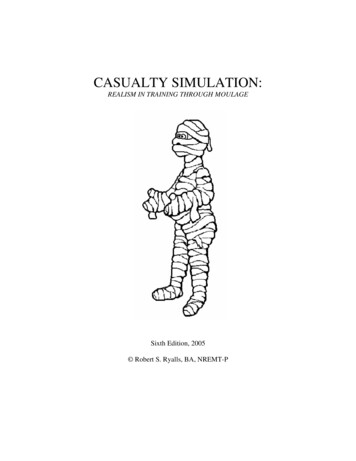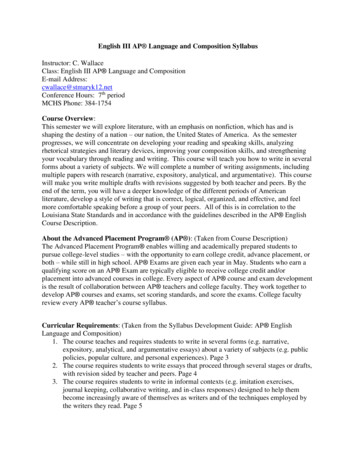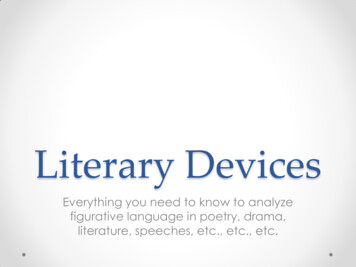
Transcription
Literary DevicesEverything you need to know to analyzefigurative language in poetry, drama,literature, speeches, etc., etc., etc.
Essential QuestionWhat are the literary devices I needto understand to analyze poetry,drama, and other literature?
TEKStudents understand, make inferencesand draw conclusions about how anauthor's sensory language createsimagery in literary text and provideevidence from text to support theirunderstanding
Figurative Languagelanguage that is not meant to be takenliterally, or word for word
Imagery/Sensory Language the use of language to create mentalimages and sensory impressions foremotional effect and intensity Example—o He could hear his world crashing down when he heardthe news about her.o A host, of golden daffodils;Beside the lake, beneath the trees,Fluttering and dancing in the breeze.Continuous as the stars that shineAnd twinkle on the Milky Wayfrom Daffodils by William Wordsworth
Simile a comparison of two things that areessentially different, using the wordslike or as Exampleo O my love is like a red, red rosefrom Robert Burn’s “A Red, Red Rose”
Metaphor a subtle comparison in which an authordescribes a person or thing using wordsthat are not meant to be taken literally Examples—All the world's a stage,And all the men and women merelyplayers:They have their exits and theirentrancesfrom As You Like It by William Shakespeare
Extended Metaphor a metaphor introduced and then further developedthroughout all or part of a literary work, especially apoem—comparison can be made to somethingelse not mentioned in the poem Example—o Nothing Gold Can Stay by Robert Frost
Extended MetaphorNothing Gold Can Stay by Robert FrostNature's first green is goldHer hardest hue to hold.Her early leaf's a flower;But only so an hour.Then leaf subsides to leaf.So Eden sank to grief,So dawn goes down to day.Nothing gold can stay.Comparison life to a sunrise
Personification figurative language in whichnonhuman things orabstractions are represented ashaving human qualities Example—o Necessity is the motherof all invention.
Hyperbole an intentional and extremeexaggeration for emphasis oreffect Example—o This book weighs a ton.
IdiomPhrases people use in everydaylanguage which do not makesense literally, but the meaningis understoodExamples—Just hold your horses if you thinkidioms are hard! I’m here to letthe cat out of the bag. Idioms area dime a dozen, and learningthem is a piece of cake.OK now what?
Sound DevicesFocus on the sound of words, rather thantheir meaning
Repetition Repetition is when an author repeats a word,phrase, sentence, or stanza for effect or emphasis. Examples:o The chorus or refrain of almost any songo This poem, by Shel Silverstein:
RhymeRhyme is the repetition of endsounds in two or more wordsor phrases that appear closeto each other in a poem.ABCB
Alliteration Alliteration is the repetition of a sound at thebeginning of words. Common examples:Coca-cola, Tiny Tim, Mickey Mouse
Assonance Assonance is the repetition of vowel sounds Often creates near-rhyme“The Bells” by Edgar Allen Poe“mellowweddingbells” –short e sound“moltengoldennotes” –long o sound“liquidditty” –short i sound
Consonance Consonance is the repetition of consonant soundsat the end or middle of words (not rhyme). For example:“Do Not GoGentle into thatGood Night”by Dylan Thomas“blind eyes couldblaze” – z sound“curse, bless menow with yourfierce tears” –s sound
Onomatopoeia Onomatopoeia- a word that sounds like the sound itmakes For example: pop, crackle, screech, zip, fizz Not just sound effects!
Other Literary DevicesEven more
Symbol A symbol is an object, person, place, or actionthat has a meaning in itself, and that also standsfor something larger than itself.For example:A dove symbolizes peace.A black crow or raven symbolizes death.A wedding ring symbolizes.?
Allusion An allusion is a reference to a person, place,event, or literary work that a writer expects thereader to recognize and understand. It maycome from history, geography, literature, art,music, or religion.For example:You were Romeo, you were throwing pebblesAnd my daddy said, "Stay away from Juliet”“Love Song”, by Taylor Swift
Oxymoron An Oxymoron is a figure of speech in which oppositesare paired for effect.
Aphorism a concise statement of a generaltruth or principle; like a truism Example—o A penny saved is a penny earned. - Ben Franklino The man who does not read good books has noadvantage over the man who cannot read them. Mark Twaino “You never really understand a person until youconsider things from his point of view – until youclimb into his skin and walk around in it.”from To Kill A Mockingbird by Harper Lee
Epigraph a quotation at the beginning of aliterary work to introduce its theme Example—o But of the tree of the knowledge of good andevil,thou shalt not eat of it:for in the day that thou eatest thereofthou shalt surely die.(Genesis 2:17)--from Twilight by Stephanie Meyero http://www.youtube.com/watch?v LnBr-7QzBBg
Irony a literary technique used tocreate meaning that seems tocontradict the literal meaningor eventso Verbalo Situationalo Dramatic
Verbal Irony use of words in whichthe intended meaning iscontrary to the literalmeaning Example –o “Are we gonna do anythingtoday?” or “Is class gonna be funtoday?”o In SHREK , when Fiona Says“Where are you going?” andShrek replies “I’ve got to save myass.” (Speaking of Donkey, ofcourse.)
Situational Irony implying through plot or character that asituation is quite different from the way it ispresented. Example—o 'The Wonderful Wizard of Oz', Scarecrow alwayshad a brain; Tin Man always had a heart;Dorothy could have always gone home; theCowardly Lion wasn’t a coward after all.
DramaticIrony dramatic device in which a character saysor does something that he or she does notfully grasp but which is understood by theaudience Example—o Lois Lane is constantly trying to get an interviewwith Superman, but she actually sees him everyday and doesn’t know it (Clark Kent).
Sarcasma bitter form of irony, can beintended to tease or hurt;often insinuated by the tone;late Greek sarkasmós,f. sarkázein tear flesh, gnashthe teeth, speak bitterly,f. sárx, sark- flesh.Example—o “I’m proud of you, Mom. You’re likeChristopher Columbus. You discoveredsomething millions of people knew aboutbefore you.” –Lisa Simpson
Paradox a seemingly contradictorystatement that on closer analysisreveals a deeper truth Example—o “I’m nobody.” --anonymouso “I can resist anything but temptation.” --OscarWildeo “Nobody goes to that restaurant; it’s toocrowded.”
For Analyzing PoetryReview
Refrain a phrase or verse recurring at intervalsin a song or poem, especially at theend of each stanza; chorus. Example—o “All you need is loveLove is all you need”--The Beatleso http://www.youtube.com/watch?v s-pFAFsTFTI
Rhythm the BEAT created by the sounds offthe words in a poem Rhthym can be created by meter,rhyme scheme, alliteration,assonance, and refrain.
Stanza A stanza is a group of related words in a poem,similar to a paragraph of prose but does nothave to have complete sentences. It’s like a poetry paragraph!“When the Teacher’s Back is Turned” by Ken NesbittWhen the teacher’s back is turnedWe never scream and shoutNever do we drop our booksand try to freak her out.No one throws a pencilAt the ceiling of the class.No one tries to hit the fire alarmAnd break the glass.Stanza 1Stanza 2
Style Style is a manner or “way” of writing. It involves HOW something is said rather that what isactually said. A writer’s style is determined by the way he/she useswords.o Ex: vivid verbs, imagery, sentence structure
maggie and milly and molly and maywent down to the beach (to play one day)and maggie discovered a shell that sangso sweetly she couldn't remember her troubles,and No capitallettersmilly befriended a stranded starwhose rays five languid fingers were; Personificationand molly was chased by a horrible thingwhich raced sideways while blowing bubbles: and Ends lines inthe middle of a“sentence”may came home with a smooth round stoneas small as a world and as large as alone.For whatever we lose (like a you or a me)it's always ourselves we find in the sea ImageryE. E. Cummings writes all his poems like this—no capital letters, simplelanguage, unusual line breaks. Why do you think he does this?
Tone Tone is the writer’s attitude toward a subject,character, or audience and is conveyed throughthe author’s choice of diction, imagery, figurativelanguage, details, and syntax. (In other words, tone is how the author feels abouthis subject, character, or audience, and he shows itthrough the words he chooses, and how he putsthem together.)
ToneSome words that can describetone ieddepressedEcstatic
Mood The feeling that the writer creates for the reader. This is how the reader is supposed to feel about thesubject. Descriptive words, imagery, and figurativelanguage all influence the mood of a literary work.
Theme Theme is the central message of a literary work, orthe idea the author wishes to convey about thatsubject. It is not the same as the subject, whichcan be expressed in one or two words. (This is a lotlike a truism.) Possible themes for The Outsiders:o Not all kids who are in gangs are bad.o People may come from different backgrounds, butwe’re all the same people.o If something bad happens to someone, don’t blame iton yourself if it’s not really your fault.
Aphorism a concise statement of a general truth or principle; like a truism Example— o A penny saved is a penny earned. - Ben Franklin o The man who does not read good books has no advantage over the man who cannot read them. - Mar


